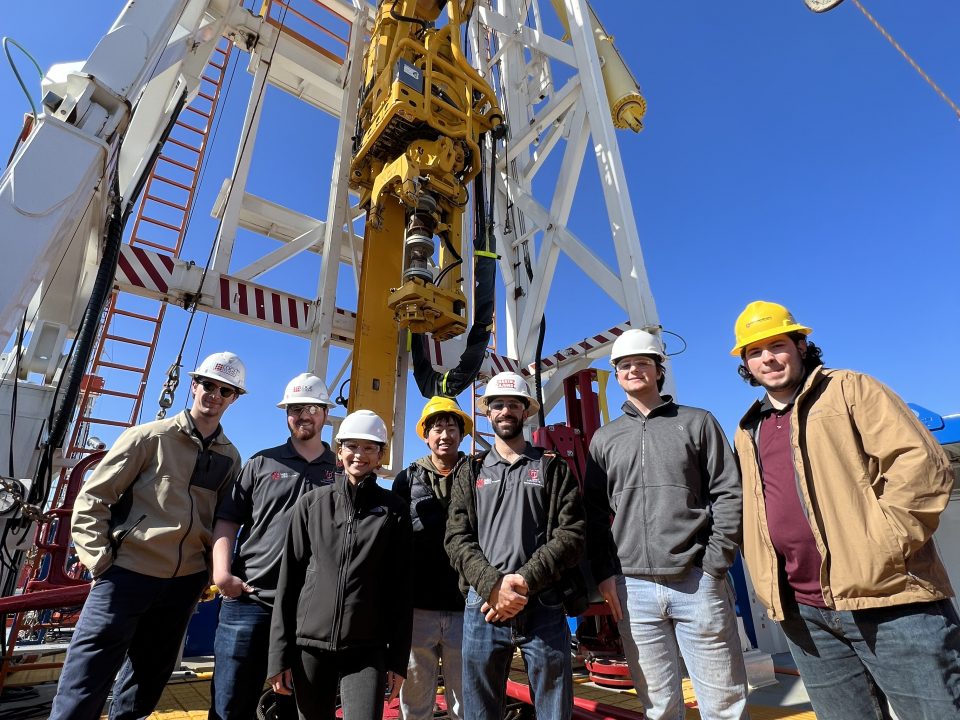Crown Block Warning Devices
Crown Block Warning Devices
Running into the crown block with the traveling block is not an everyday occurrence. But when it happens the results may be catastrophic, both in damage to equipment and injury to employees.
This type of mishap usually is the result of poor judgment by personnel. The driller may be distracted and any mental lapse during high-speed hoisting operations can be disastrous.
As long as the human element is involved in the operation of the drawworks, these mishaps will occur. However, the human element is not always responsible. Not often, but occasionally, a clutch will stick or a throttle will jam. In anticipation of these conditions, many contractors install an emergency ignition switch on gas engines, emergency fuel cut-off on diesel engines, and an emergency “stop” button on electric rigs.
One device which has been in use for a number of years and which, no doubt, has prevented some problems, is the traveling block bumper. It should be attached under the crown beams. Some companies use wood seals. When these are used, they should be wrapped in expanded metal with a safety cable through the seals. Other companies have gone to rubber bumpers.
There are various devices to limit the power or shut down the drawworks should the blocks get too close to the crown. Some switches are similar to the crane limit switch. In operation, as the traveling blocks near the limit of travel, the blocks pick up an arm or a cable, which begins to rotate a switch. The arm and cable are adjusted within the limits desired and as the switch begins to open, one of the normally open contacts closes and sets off an alarm which may be a light, buzzer or horn. As the switch continues to rotate, a second set of normally closed contacts is opened thereby shutting off the power. At the same time that these contacts are opened, a third set of contacts closes, energizing a circuit which applies the brake, which stops the upward movement of the traveling block.
Another crown safety device mounts on the drawworks shaft and counts the revolutions of the shaft. It is set at a predetermined lower point, then the blocks are hoisted to the high point of travel and the device is set for the high stopping point.
Other devices mount in the drawworks and have a toggle switch that shuts off the air to the drawworks clutch and applies air to the brakes.
A word of caution is needed. Regardless of how simple or how reliable a device of this kind may be it will require regular and periodic inspection and maintenance. The drilling crews must be specifically trained in this because there is hardly anything more hazardous than a safety device which does not work all the time.
- Crown saver devices should be checked by the driller to ensure they are operating correctly shortly after he comes on tour or at the first opportunity.
- The device is often moved when the collars and bottom hole assembly are brought through the rotary table. Anytime the crown safety device is moved or deactivated to allow the traveling block to be raised above the preset stopping point, a red flag should be attached to the drawworks clutch lever as a warning to the operator. Extra special precautions should be taken by the driller while operating with the protection device deactivated.
- Each time the crown protection device is tested, reset or readjusted, this information should be entered on the daily drilling report.
- The safety device must have an air supply to operate. If the main air supply valve to the device is closed, the crown protection device is inoperative and will not work, should it be needed.
- Some people remove the toggle stem from the toggle valve assembly rather than sliding the toggle valve assembly to one side so the blocks can be raised above the present level.
- If this is done the toggle stem should be placed on the drillers console and the driller should operate using caution until the safety device is again put in proper operating condition.




